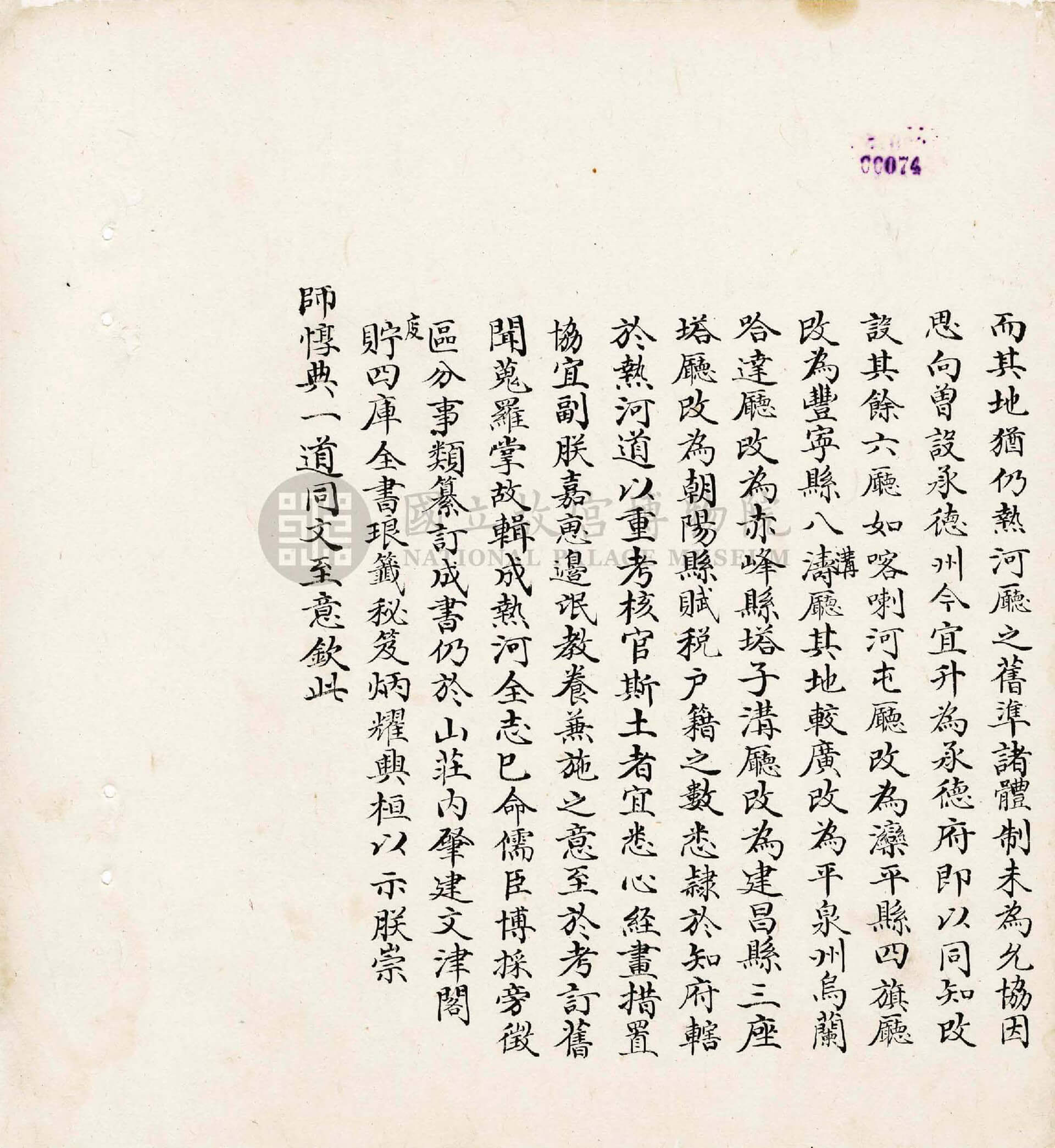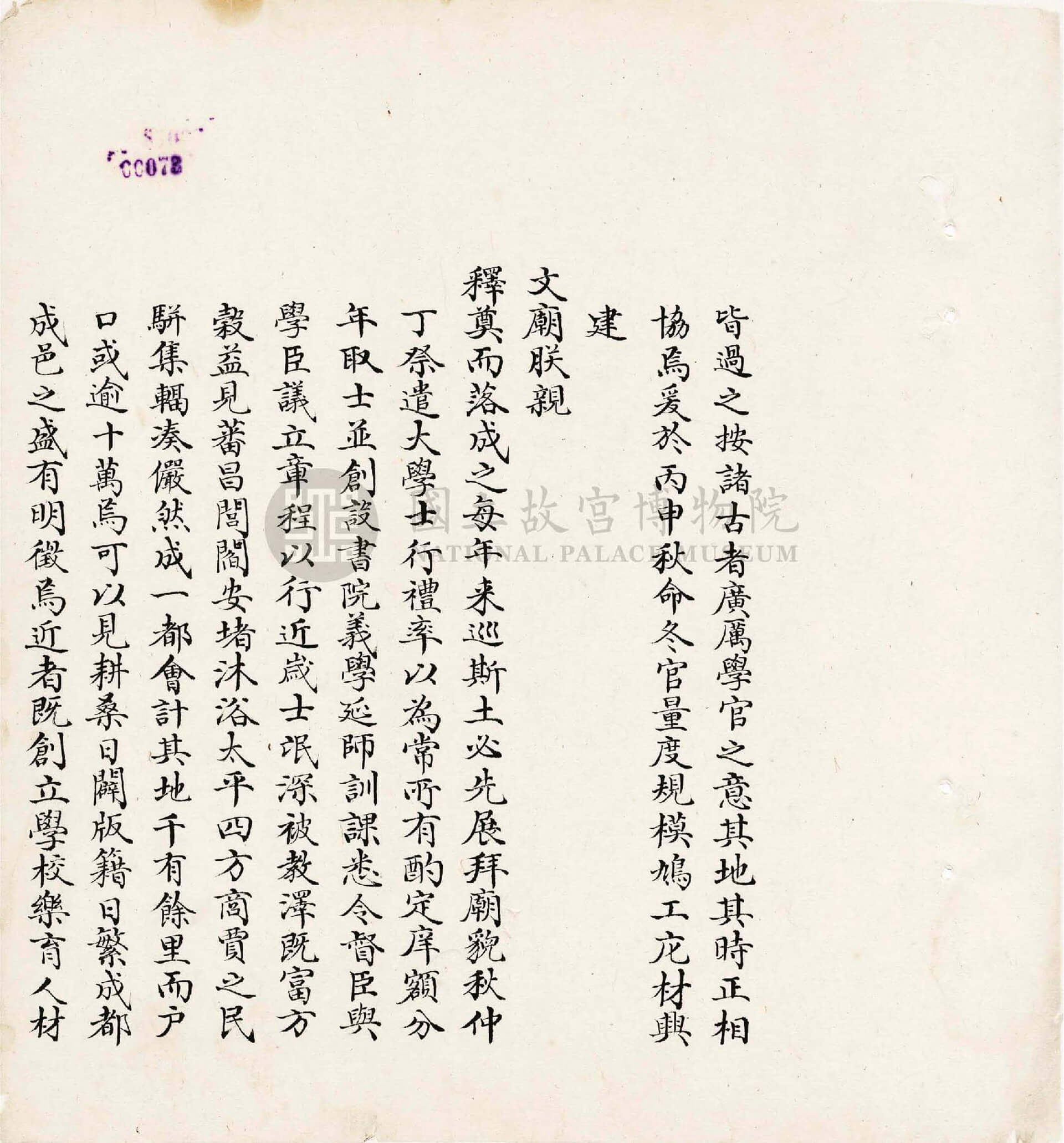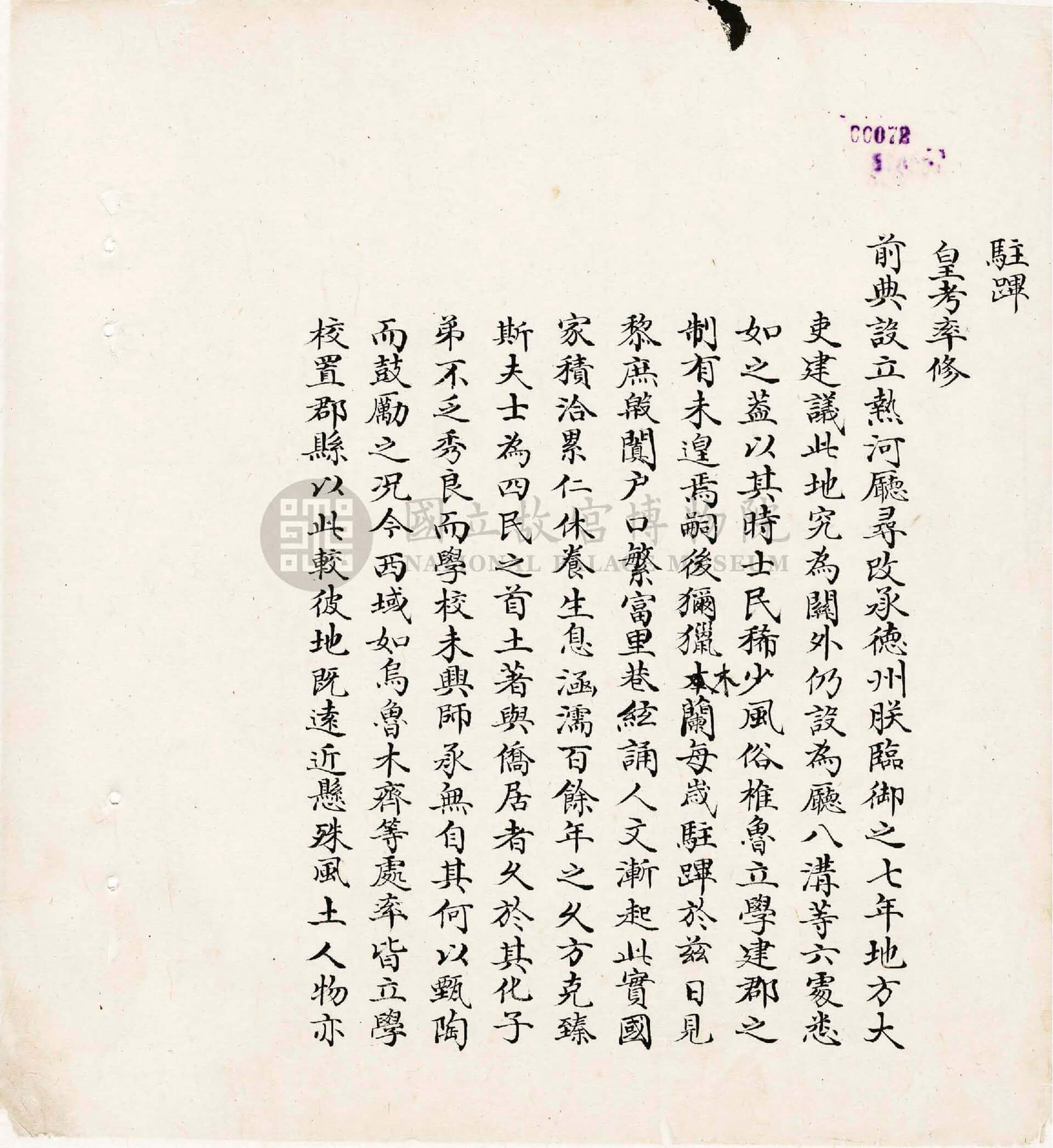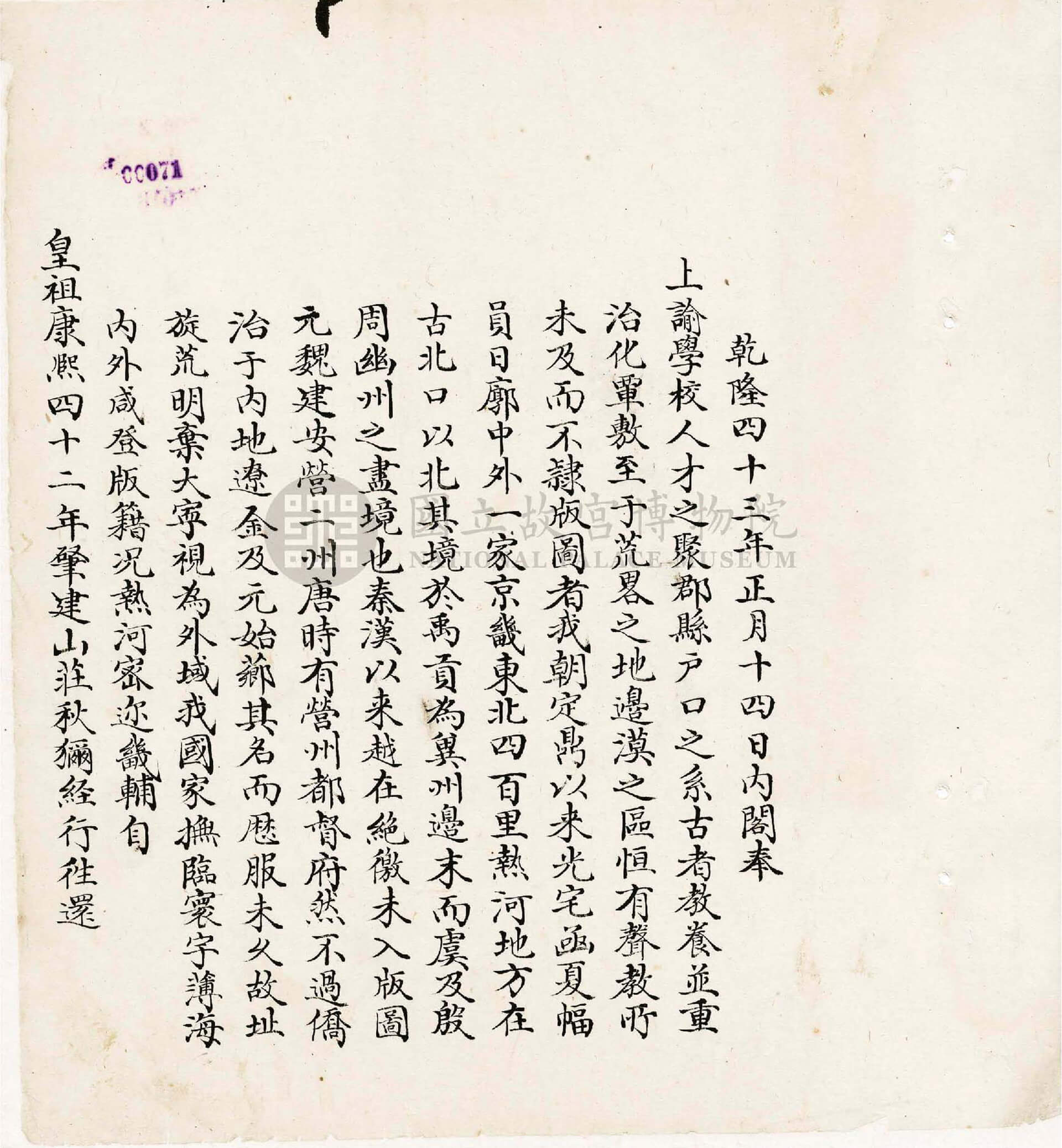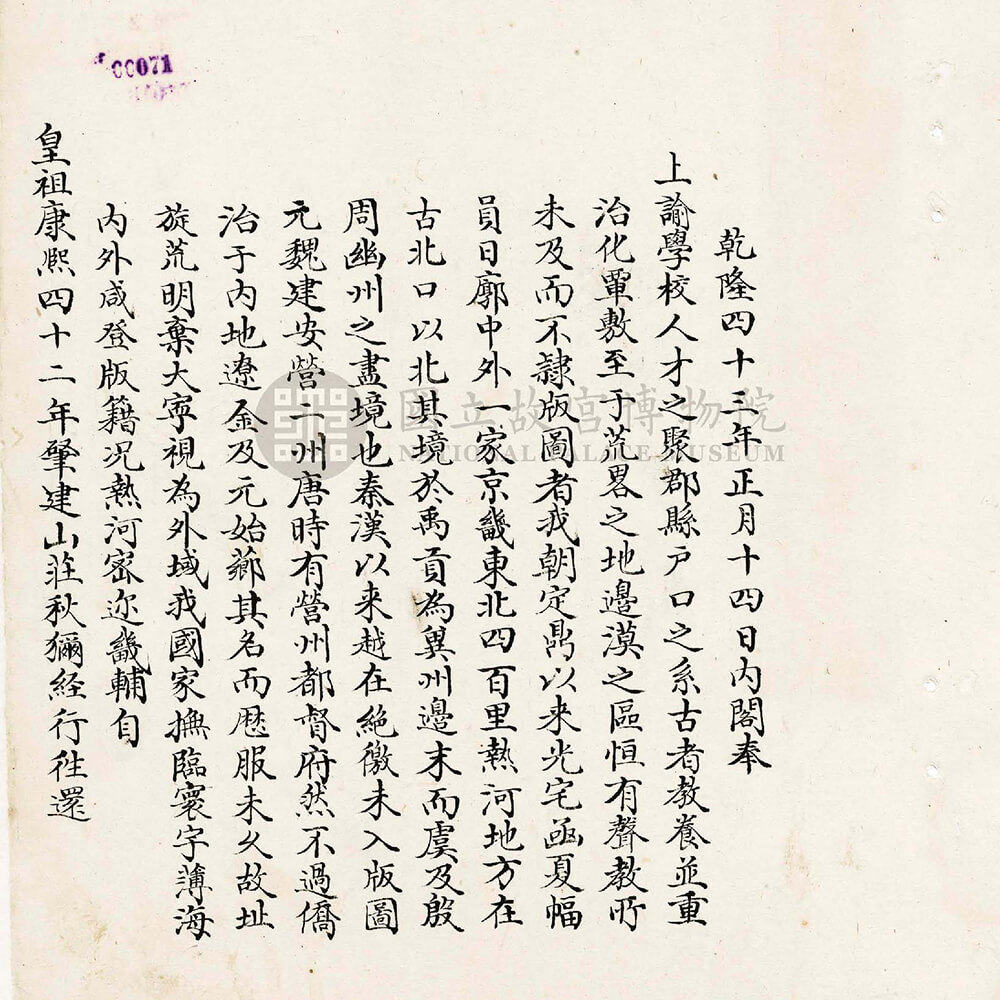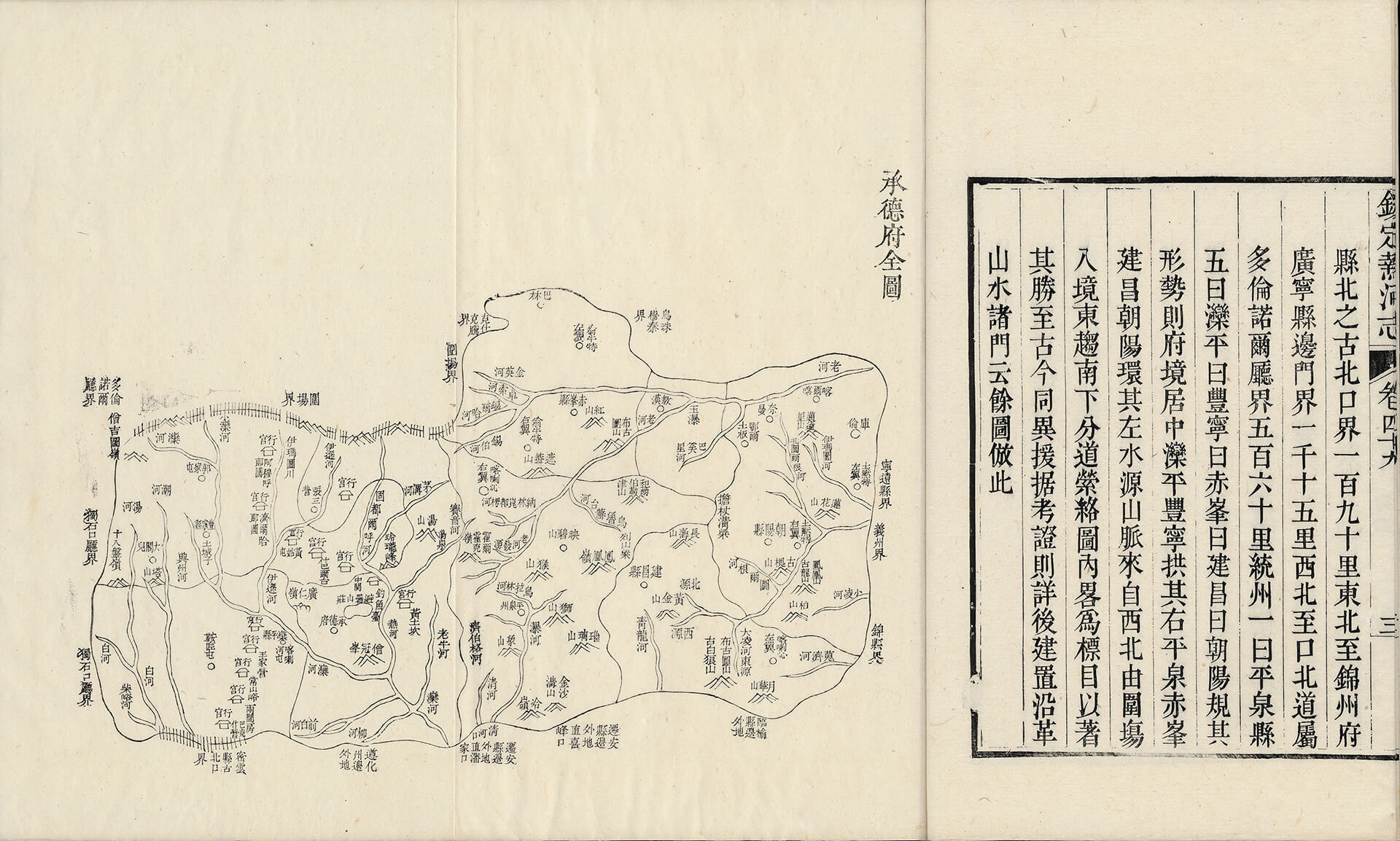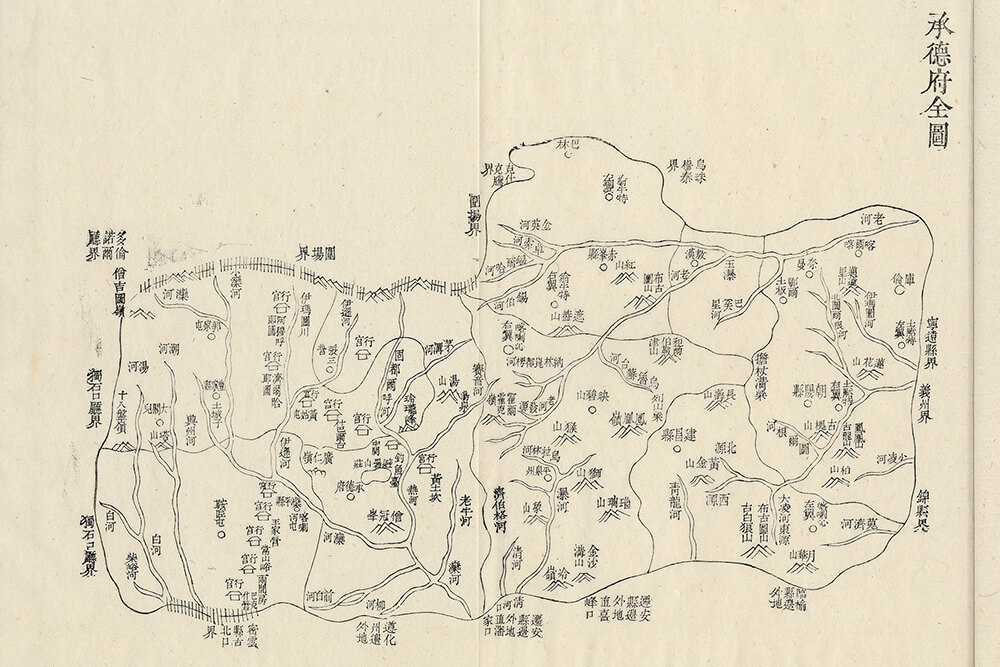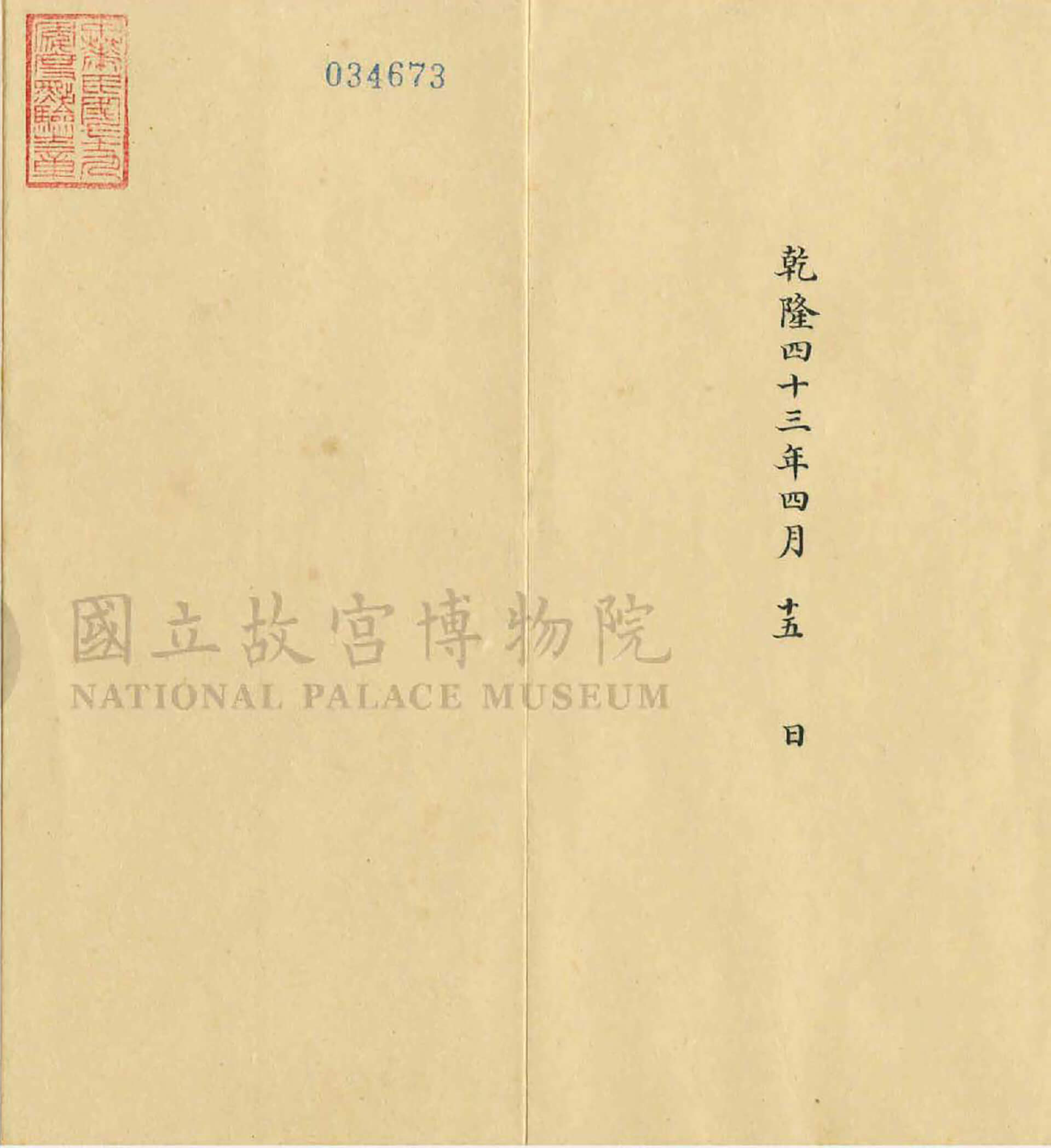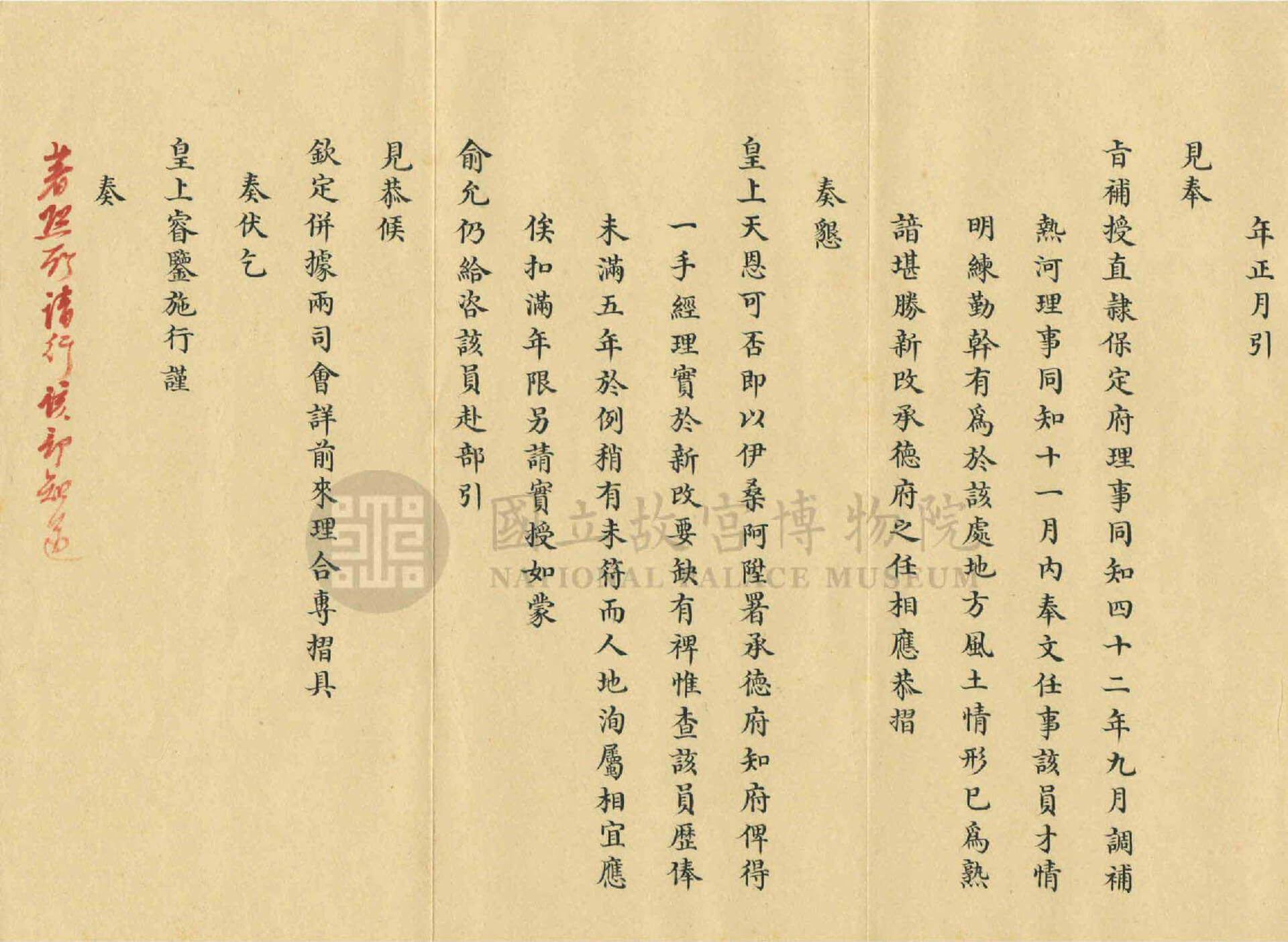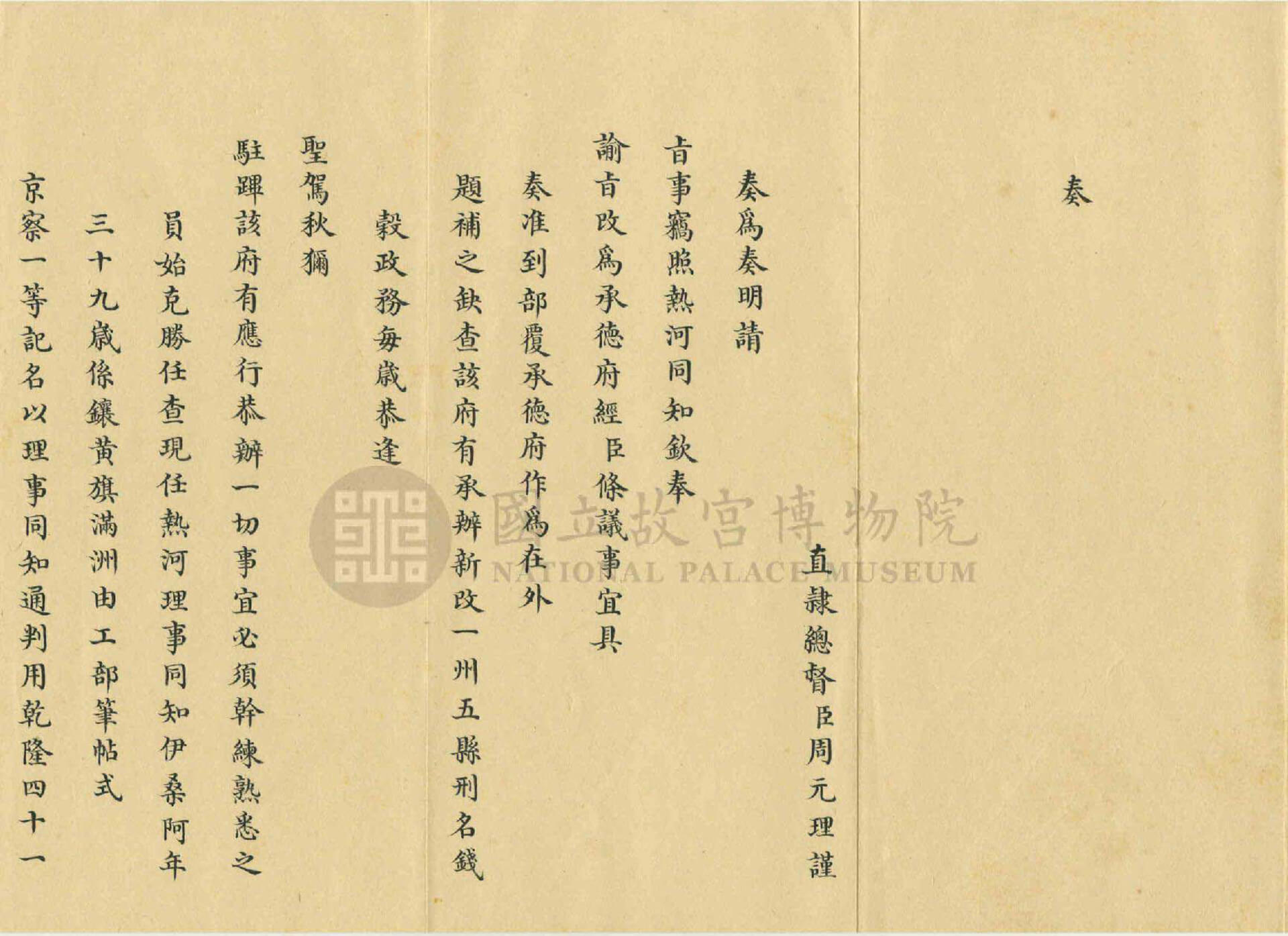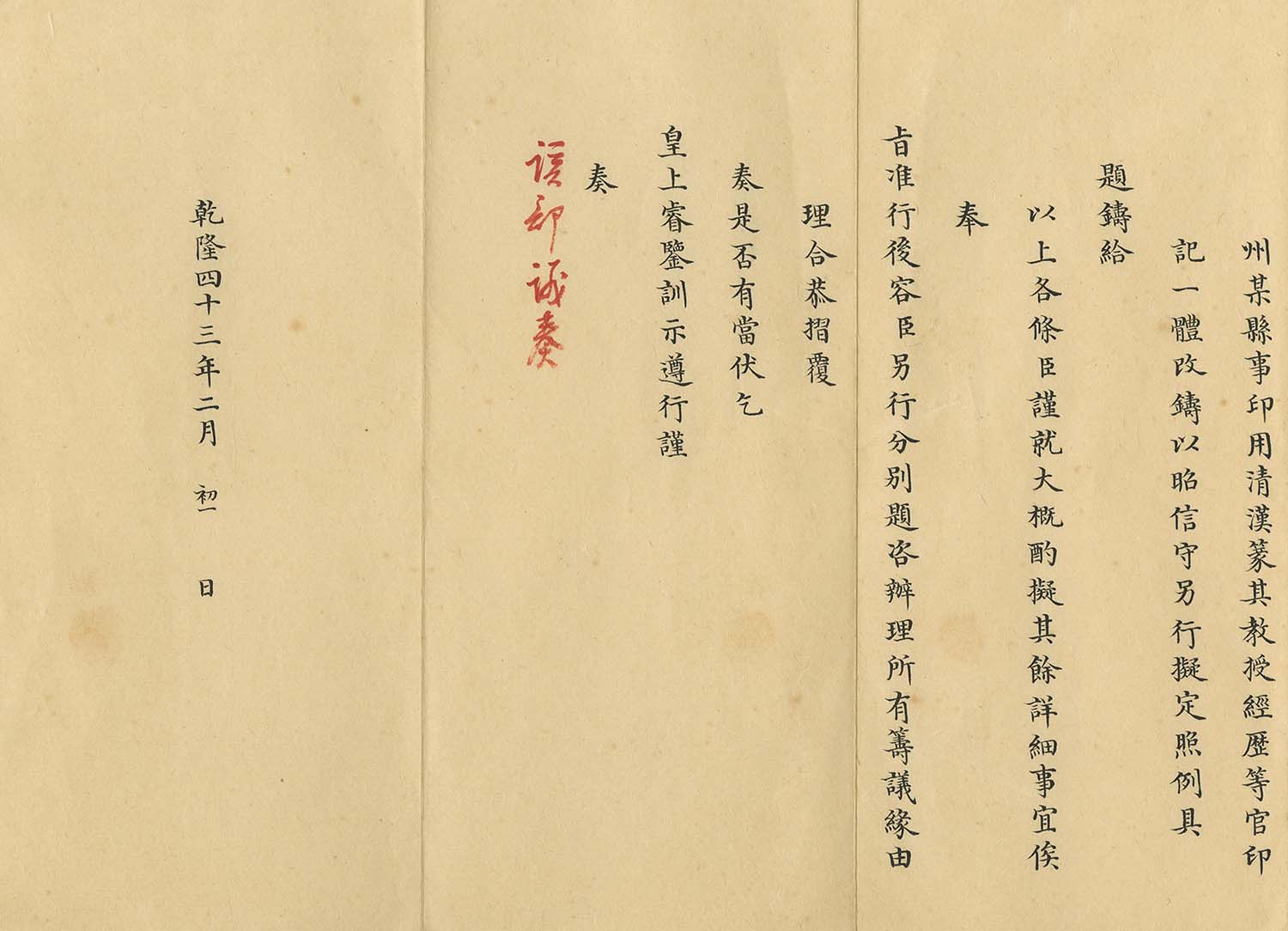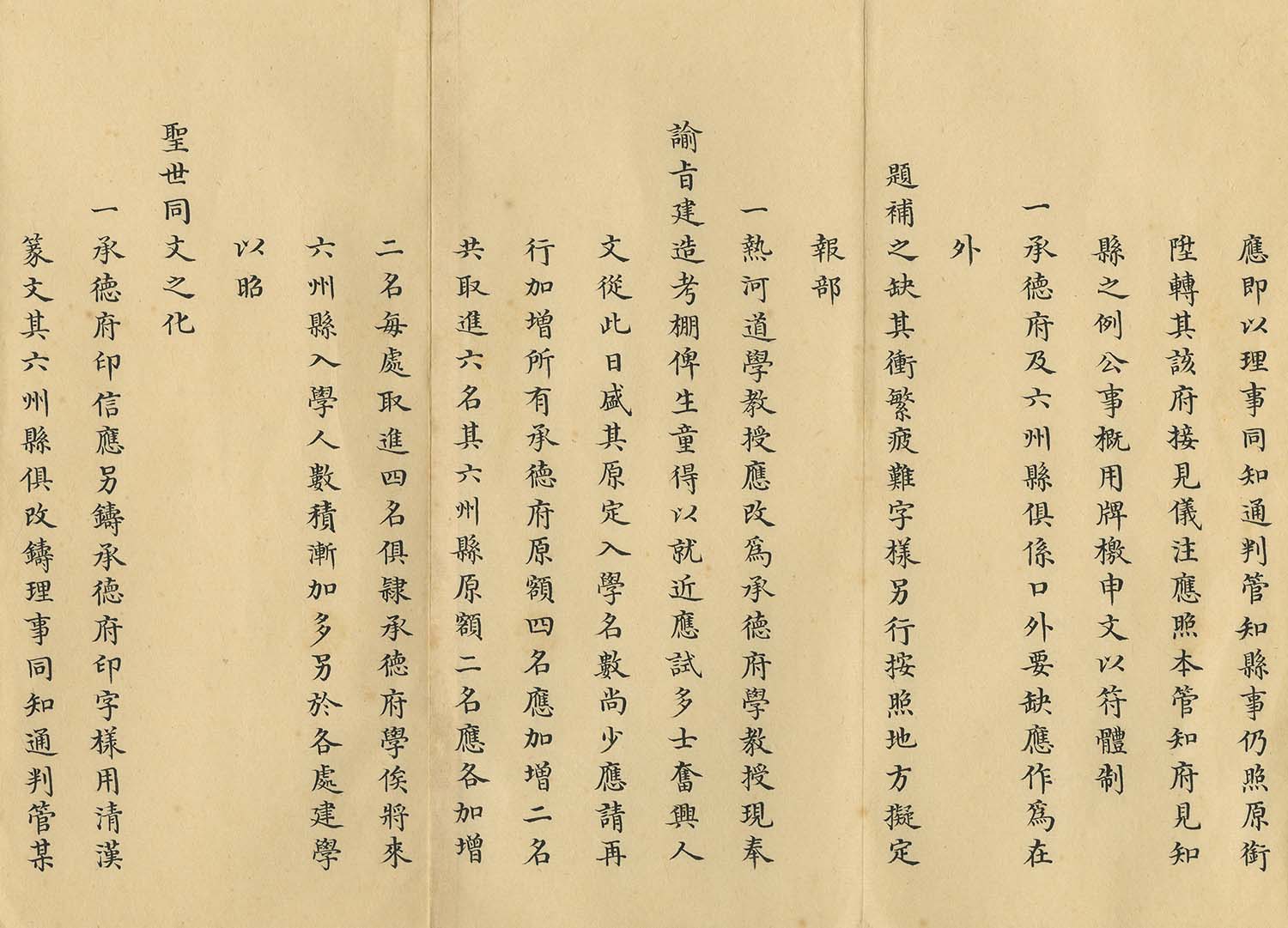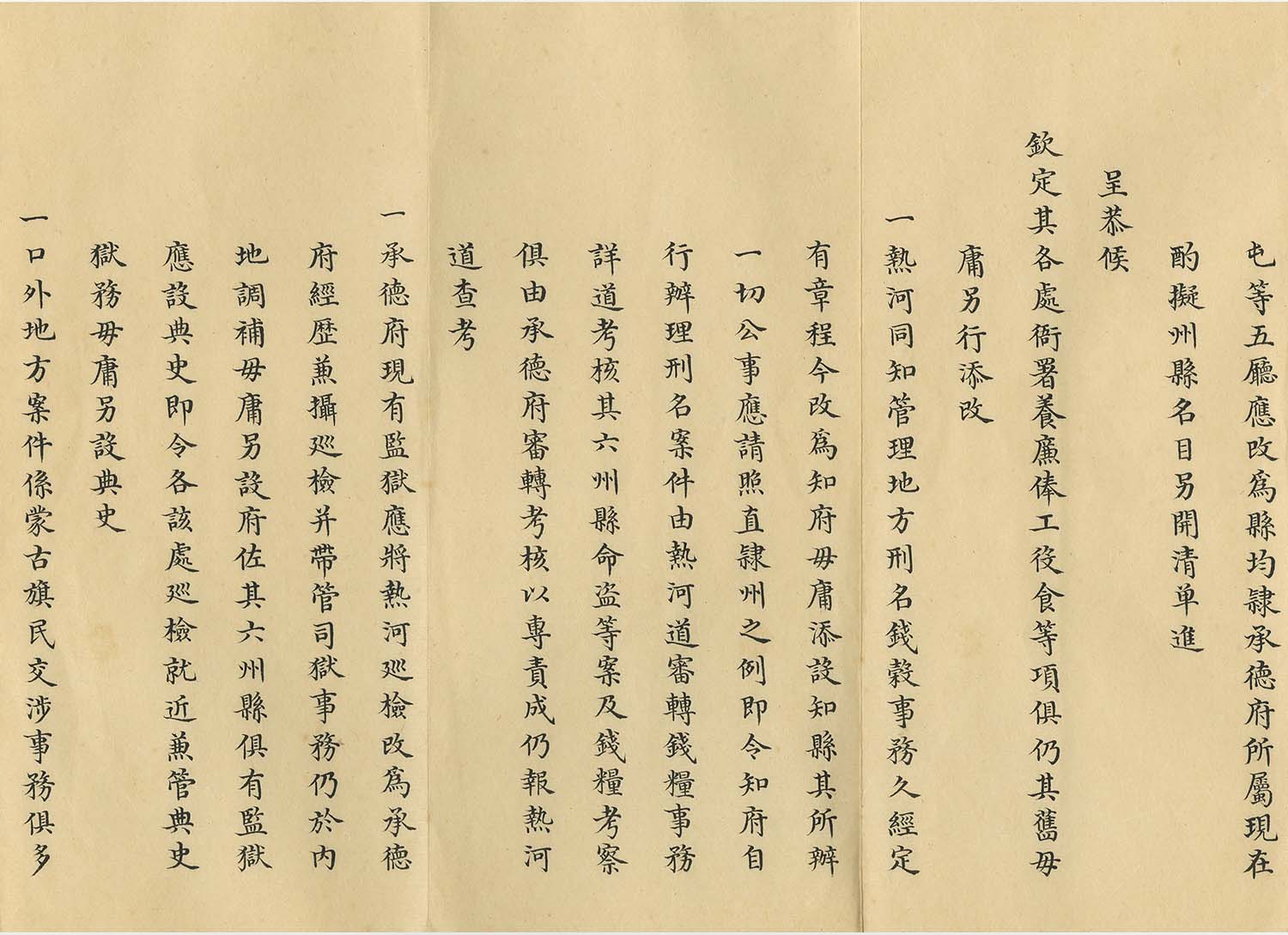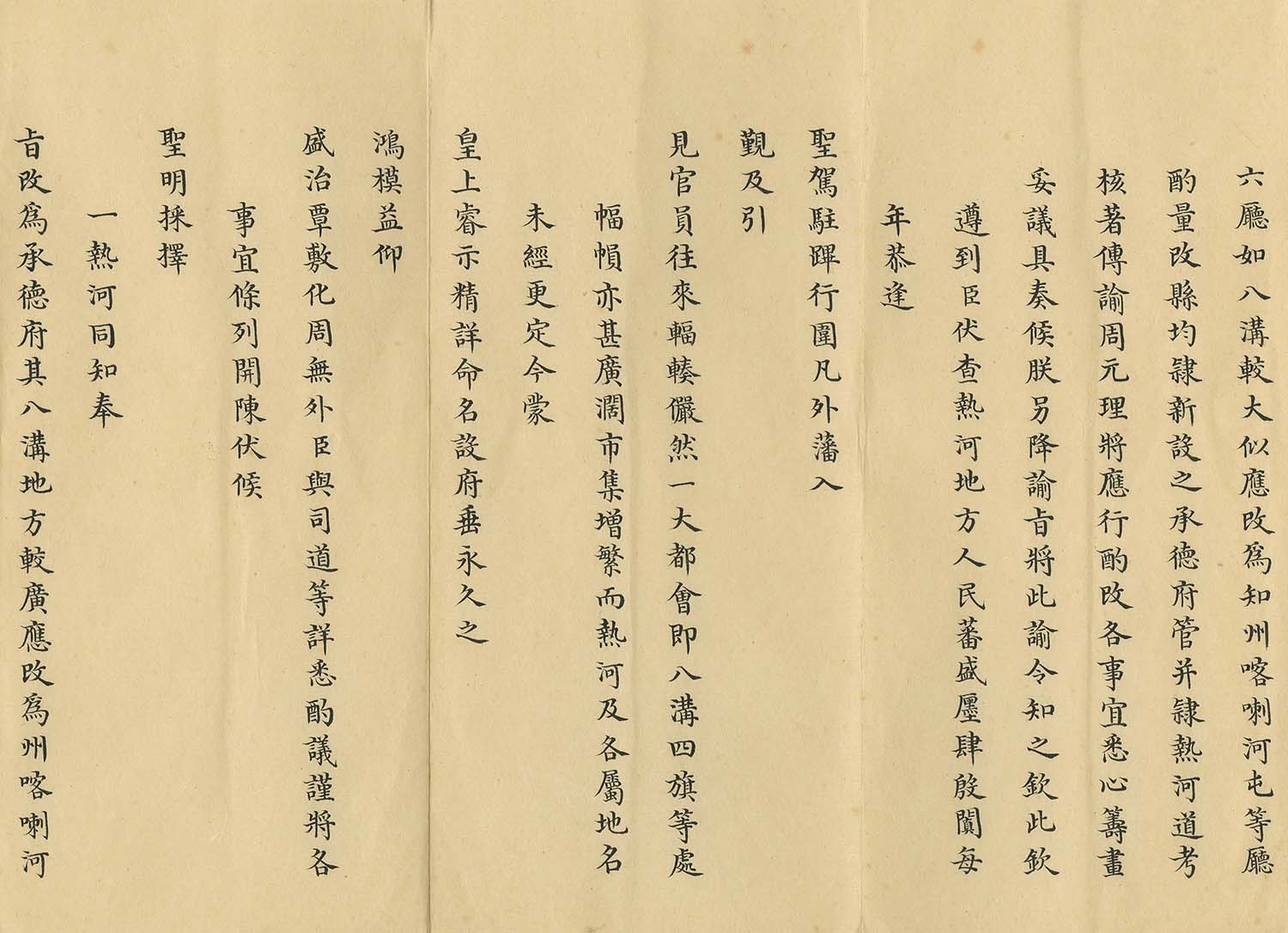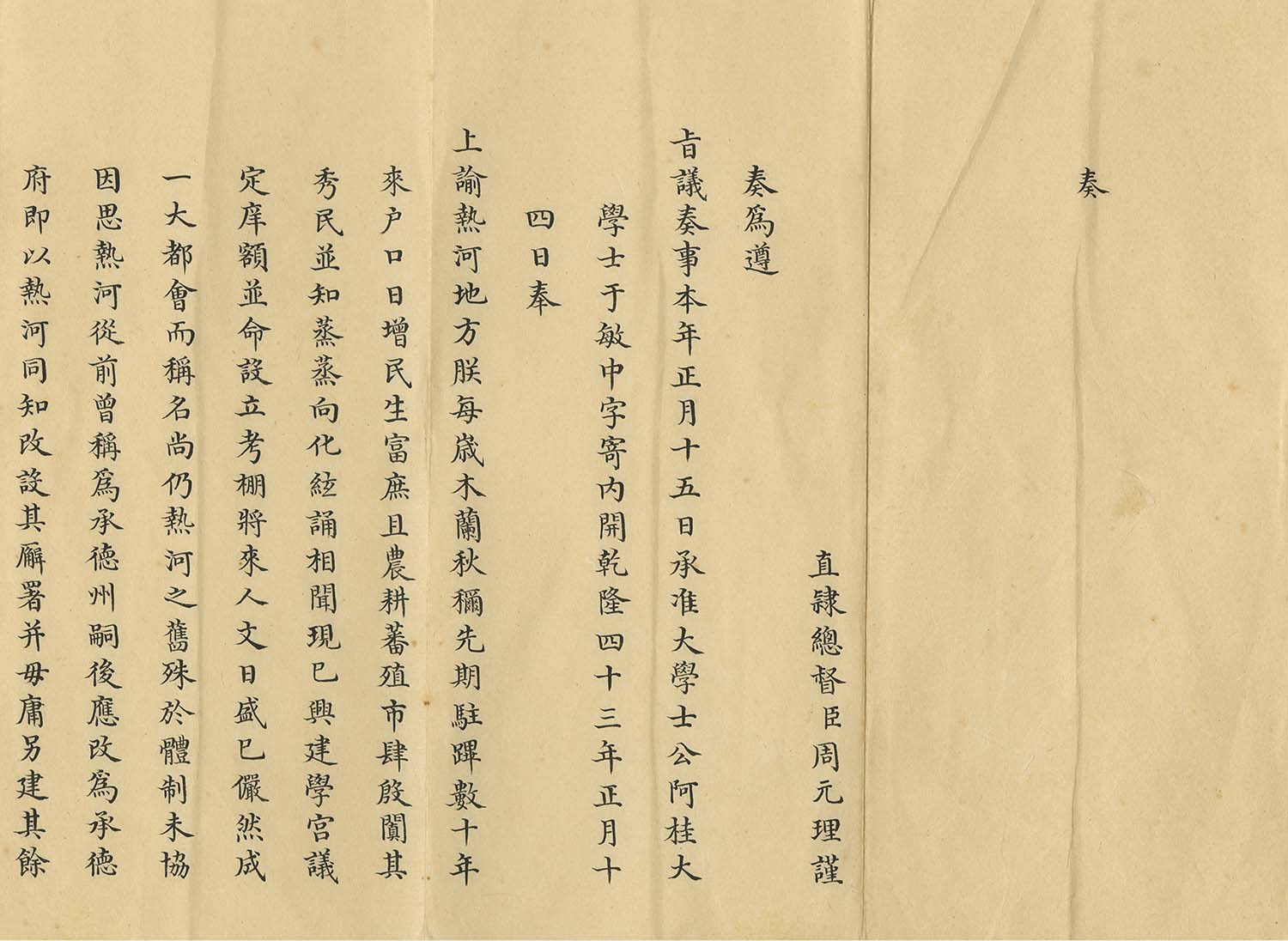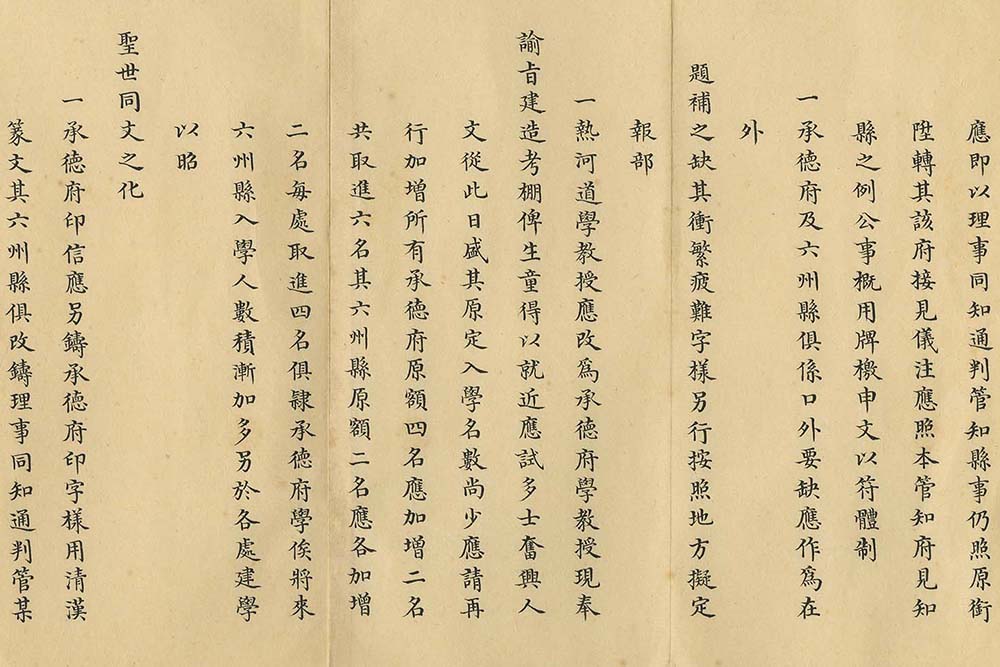Local Administration in the Multi-ethnic Empire
Under Qing rule, China was a multi-ethnic state dominated by the Manchus. In order to maintain stability, the political system at the central government level reflected the state's multi-ethnic composition; meanwhile, at the local government level, regimes of governance also mirrored regional characteristics.
The Chengde Summer Resort stood at the juncture of Manchu, Mongol, and Chinese territories, so the local administrative system was an amalgamation of the governance structures of the three groups: the Manchu Eight Banners were stationed there to ensure the security of the Resort and provide a livelihood for the Manchus, the Mongolian Banners system was a way for the Qing court to woo the Mongol elite and meet their socio-economic needs, while the prefectural and county divisions helped to govern the vast number of Han settlers. Later, with the creation in Jehol of the post of Commander-in-Chief (dutong) during the Jiaqing reign, the above three distinct systems were brought under a single military governance system.
Subprefecture, State, and Prefecture System
The subprefecture, state, and prefecture system was a unique local system in China. During the Yongzheng and Qianlong periods and following the completion of Summer Resort, to make the governance of Chinese people easier, the Jehol Subprefecture, Chengde State, and Chengde Prefecture were successively established (the last of which was established in 1778). The state had five subprefectures. During the Guangxu and Xuantong periods, the number of immigrants to Jehol grew, increasing the number of local affairs. Thus, administrative divisions were amended, producing two prefectures (i.e., the Chengde and Chaoyang prefecture), one state, and 10 subprefectures.
Imperial edict upgrading the Jehol Subprefecture to the status of Prefecture
- From Shangyu Dang (Archives of Collected Imperial Edicts)
- 14th day of the 1st month of the 43rd year of the Qianlong reign (February 10, 1778), Qing dynasty
This imperial edict explained how Emperor Qianlong upgraded the Jehol Subprefecture to the Chengde Prefecture because of the prosperity, growing number of people, and development of human culture of the region.
Palace memorial on the appointment of Yi Sanga, the current Associate Adminstrator of Jehol, as the Prefect of Chengde
- Presented by Zhou Yuanli (1706-1782), Governor-General of Zhili
- 15th day of the 4th month of the 43rd year of the Qianlong reign (May 11, 1778), Qing dynasty
After the Jehol Subprefecture was upgraded to the Chengde Prefecture, the official positions of the governors in charge had to be upgraded accordingly. Thus, Viceroy of Zhili Zhou Yuanli (1706-1782) petitioned for the emperor to grant the promotion of Yi Sanga, the director of the Jehol Subprefecture at the time, to the prefect of Chengde Prefect. However, because Yi Sanga had not met the "years of service" requirement, the promotion was to be postponed to a later date once he completed the required years of service.
Palace memorial on the preparation of the restructuring of Jehol into the Chengde Prefecture in compliance with imperial order
- Presented by Zhou Yuanli (1706-1782), Governor-General of Zhili
- 1st day of the 2nd month of the 43rd year of the Qianlong reign (February 1, 1778), Qing dynasty
During the mid- and late-Qianlong periods, Jehol witnessed population growth as well as economic, agricultural, and urban prosperity. Academies and examination halls were also built. Emperor Qianlong subsequently upgraded Jehol to the Chengde Prefecture, and issued an imperial order to viceroy of Zhili Zhou Yuanli in 1778, demanding that Zhou plan the restructuring and upgrading of Jehol into the Chengde Prefecture. "Palace Memorial on the Preparation of the Restructuring of Jehol into the Chengde Prefecture in Compliance with Imperial Order" is the reply from Zhou to the emperor detailing various related matters.
